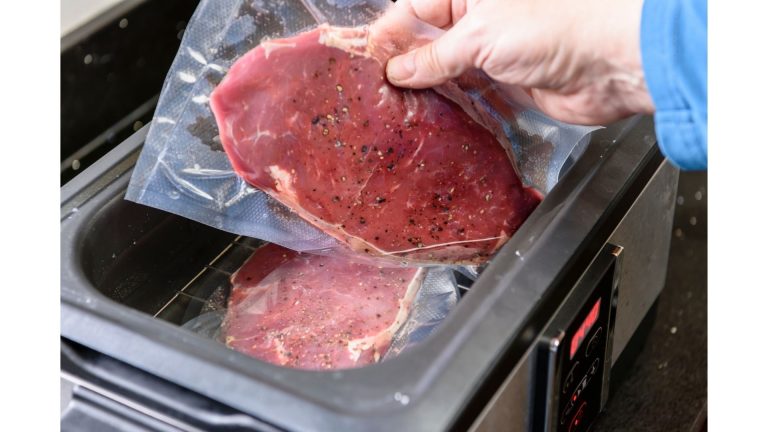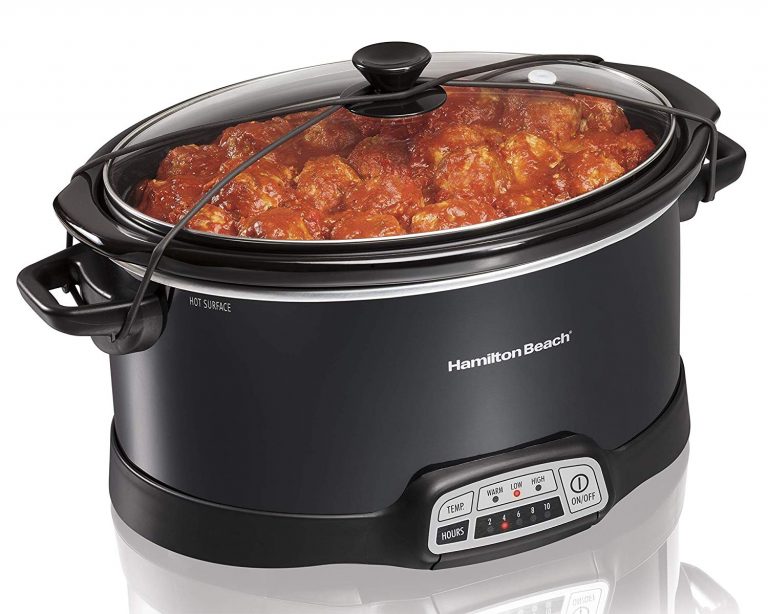How to Keep Sous Vide Bags Submerged?
There are a few things that can cause the bag to float.
The air is trapped in the imperfect seal, and it’s likely to happen if you use the water displacement method to remove the air from the bag.
If the food you’re cooking is less dense than water, then the bags can float. Your bags must stay submerged and trapped air bubbles are pushed to the top of the bag and away from the food, with sous vide cooking.
This is the only way to make sure that your food is heating up properly, which is important for both food safety and quality.
How do you sink a persistently floating bag?
A spoon or butter knife should be sealed directly into the bag. I can’t always predict when a bag will float, and I don’t want to have to open a sealed bag to add weight to it.
All you have to do is place a large binder clip on the bottom of the bag and place a heavy spoon in the mouth of the clip.
The head of the spoon will keep it from falling out, and the weight will keep your food submerged. You can add a few spoons to stubborn bags.
I keep the binder clips in a box with my other gear. You can use them to clip bags to the edge of your cooking container to keep things neat as they cook.
Table of Contents
Other ways to keep your sous vide bags submerged
Make sure that you get as much air out as you can. If you don’t have a vacuum system, try the “water displacement method,” where you submerge the bag in a bowl or pot of water and let the water pressure push out the air.
If this doesn’t cut it, you have other options, but don’t worry.
You can use a rack:
Keeping bags from drifting to the surface can be accomplished with the help of dish drying racks, file organizers, and lid organizers.
Weight it down:
Since the butter knife is made from food-grade steel, it won’t taint your meal, and it can keep it from bobbing.
It is possible to clip a bag of change or pie weights to the outside of the bag, meaning you don’t have to clean a butter knife.
Enlist Your Steamer Basket:
An inverted steamer basket can keep your food in place while allowing water to circulate, but it can also provide a foundation upon which to place additional weights, like heavier ceramic bowls, plates, or even just coffee mugs, water glasses, or Mason jars.
Once your bags are securely submerged, you’re good to go.
Get the air out of your bag
The easiest way to fix a sous vide bag floating is to remove all the air. This can include mastering the water displacement method for Ziploc bags, getting a FoodSaver-type sealer, or even a chambered vacuum seal.
The easiest solution is to remove the air upfront, but not everyone can afford one. Some meat and vegetables are difficult to work with, even with higher-end seals.
Many fruits and vegetables put out gasses as they are cooking, even if the air has been removed initially.
Open and Reseal Your Sous Vide Bags
If you want to periodically open your bag, let the air out, and then seal it, you can do that. When gas is being released during the cooking process, this trick works great.
Since the bags are designed to be opened and closed, it is a lot easier to use them. If you use vacuum-sealed bags, you can sometimes make them longer than normal, giving you more room to work with when resealing.
You want to make sure that you don’t suck up any juices that were in the bag.
Use Magnets to Hold Sous Vide Bags in Place
I have been experimenting with a method of holding the bags in place with magnets. You can either put a piece of metal on the inside of the water bath or put a piece of metal on the outside.
It’s best not to put the item in the pouch with the food, as some metals can transmit flavors and be food unsafe. If you use a metal pot, you can use just one magnet on the inside of the water bath and it will work.
Magnets that can’t be heated can’t be used in cooking, so make sure you get one that can do the job. Magnets are often not food safe and should be sealed away from your food.
Don’t Seal Your Bag
You need to take more drastic measures if your bag is filled with air and clipped. The water displacement method ensures that all the air is pushed to the top of the bag, but it can cause the bags to float if too much of it accumulates.
This can happen with vacuum-sealed bags as well. If it becomes an issue for you with certain types of food you can leave the bag open.
Make sure the bag is long enough to reach above the waterline, where you can clip it in place.
The pressure of water will prevent air from entering the bag while the pressure of escaping air will force its way out.
If you want, you can leave a corner open or use a knife to cut a small hole in a sealed bag. The opening needs to be out of the water.
The food should stay below the waterline at all times if you do this.
Conclusion
These are the methods you can use to keep your sous vide bag submerged. If you know more tips about how to keep your sous vide bags submerged please comment below.

Foodie and a passionate cook, I am here to share all of what I know about cooking, kitchen, and food prepping.
Follow me for delicious and healthy recipes.







